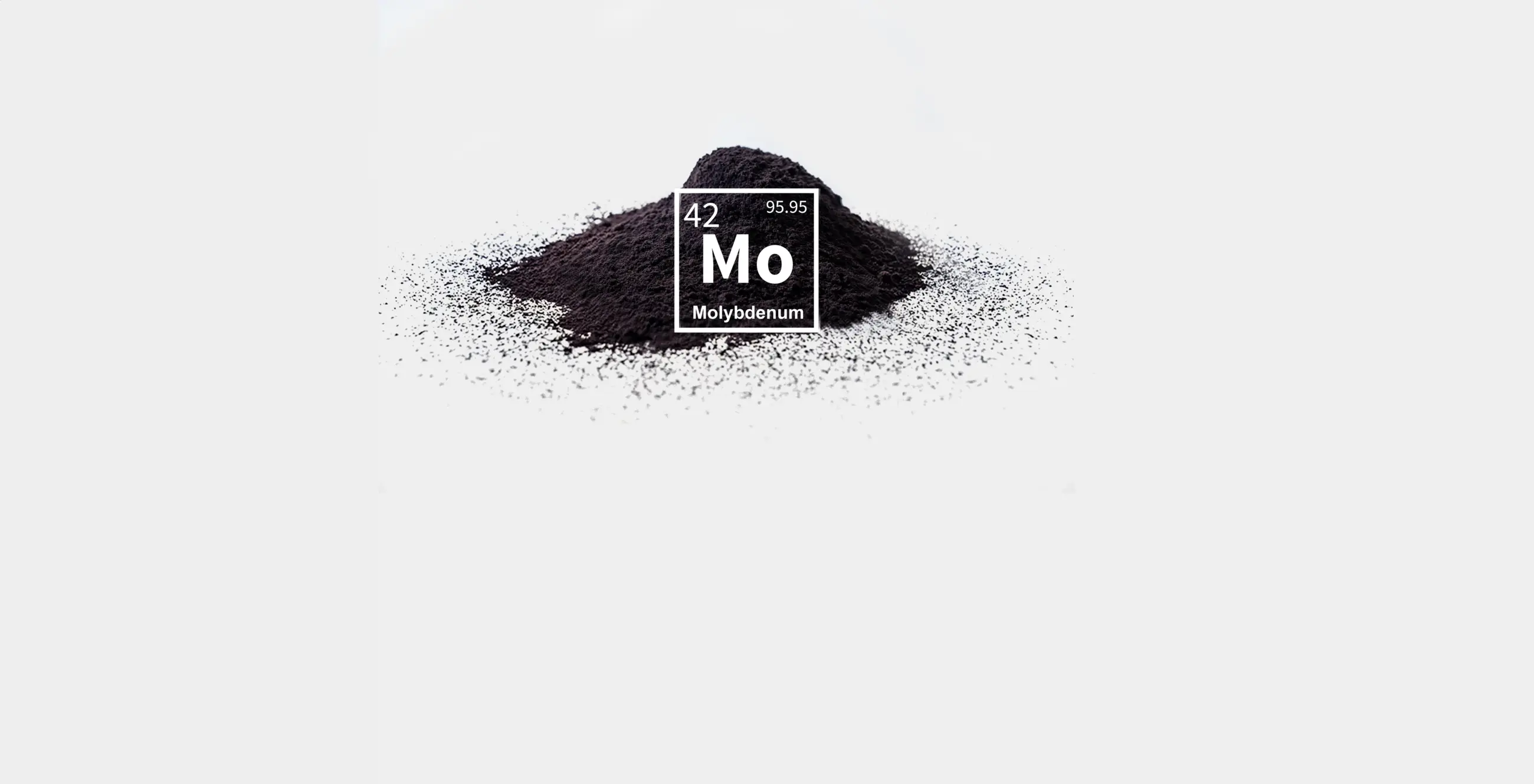
With our metals molybdenum and tungsten, we enable our customers to succeed and work with them to develop new applications.
What makes molybdenum so special?
Molybdenum is a high-melting refractory metal. Derived from the Latin word refractarius (rebellious/stubborn), it lives up to its name: the material is difficult to process and is produced using powder metallurgy techniques. Molybdenum also has low thermal expansion and high thermal conductivity, and these properties make it suitable for use in numerous industries.
Within the Plansee Group, Plansee specializes in the manufacture of products made from tungsten and molybdenum metals. Click the link below to go directly to the properties, products and applications of molybdenum metals:

4748
°F melting point
For comparison:
Iron melts at 2827°F and
copper at just 1949°F.
10,22
Density (grams per cm3)
At 10.22 grams per cubic centimeter, molybdenum is half as heavy as gold.
Facts:
- Molybdenum is a true all-rounder and has a very balanced profile of properties
- Molybdenum is easily malleable even at low temperatures and is therefore easier to process than tungsten, for example
- Unlike other metals, the ductility of molybdenum materials increases with increasing deformation
additional properties
- Good thermal conductivity
- Low electrical resistivity
- Strong bonds between atoms and higher modulus of elasticity than many other metals
- Thermophysical properties change with temperature
Frequently asked questions about molybdenum
Molybdenum is mainly produced as a by-product of copper mining in the USA, Chile, Peru, and Canada, where large deposits are found.
Molybdenum ores are first enriched using physical processes and then purified using chemical processes to the degree required for further processing.
At around 300,000 tons, three times as much molybdenum is processed worldwide each year as tungsten. In the past, molybdenum in its pure form or in the form of alloys was mainly used in classic high-temperature applications such as the lighting and furnace construction industries. Today, it is primarily coating technology, the electronics industry, the glass industry, medical technology, and metal and plastics processing that rely on molybdenum-based materials. For example, in flat-screen manufacturing, so-called sputter targets made of molybdenum materials are used to deposit thin functional layers. Another part of the molybdenum material is sold to customers in the form of sheets, strips, rods, wires, and components.
Reuse, recycling, or reprocessing: Plansee has launched numerous projects to recover as many molybdenum products as possible after they have been used by customers and to ensure that they are put to good use in line with the principles of the circular economy. Molybdenum scrap that we are unable to keep in the primary molybdenum cycle for technical reasons is reused in the steel industry as an alloy additive.
Further information on molybdenum is available on the Plansee website.
